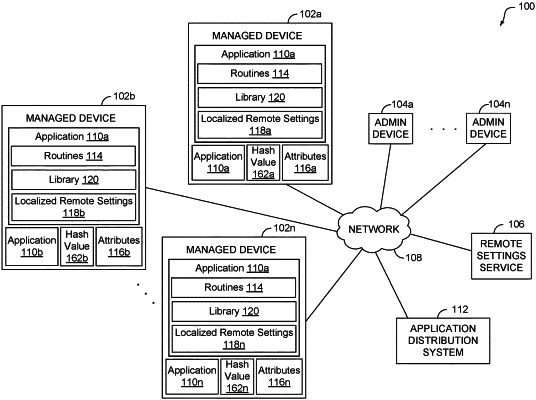| CPC H04L 67/133 (2022.05) [G06F 8/60 (2013.01); H04L 41/0873 (2013.01); H04L 41/5012 (2013.01); H04L 67/34 (2013.01)] | 20 Claims |

|
1. A computer-implemented method for remotely managing settings of applications, the method comprising:
receiving a communication from an application on a managed device, the received communication comprising an application identifier of the application and a client-side hash value of a first set of settings of the application;
identifying a server-side hash value of a second set of settings for the application using the application identifier in response to the receiving of the communication, the second set of settings comprising configuration instructions specific to the application identifier and were modified, prior to receiving the communication, in response to input provided via a device associated with the application to debug the application in association with the second set of settings, wherein the device is separate from the managed device; and
based on a difference of the received client-side hash value and the server-side hash value, transmitting, to the application on the managed device, a key-value pair representing a setting associated with the second set of settings to replace a first setting associated with the first set of settings causing the application to apply the configuration instructions to modify a configuration of the application.
|